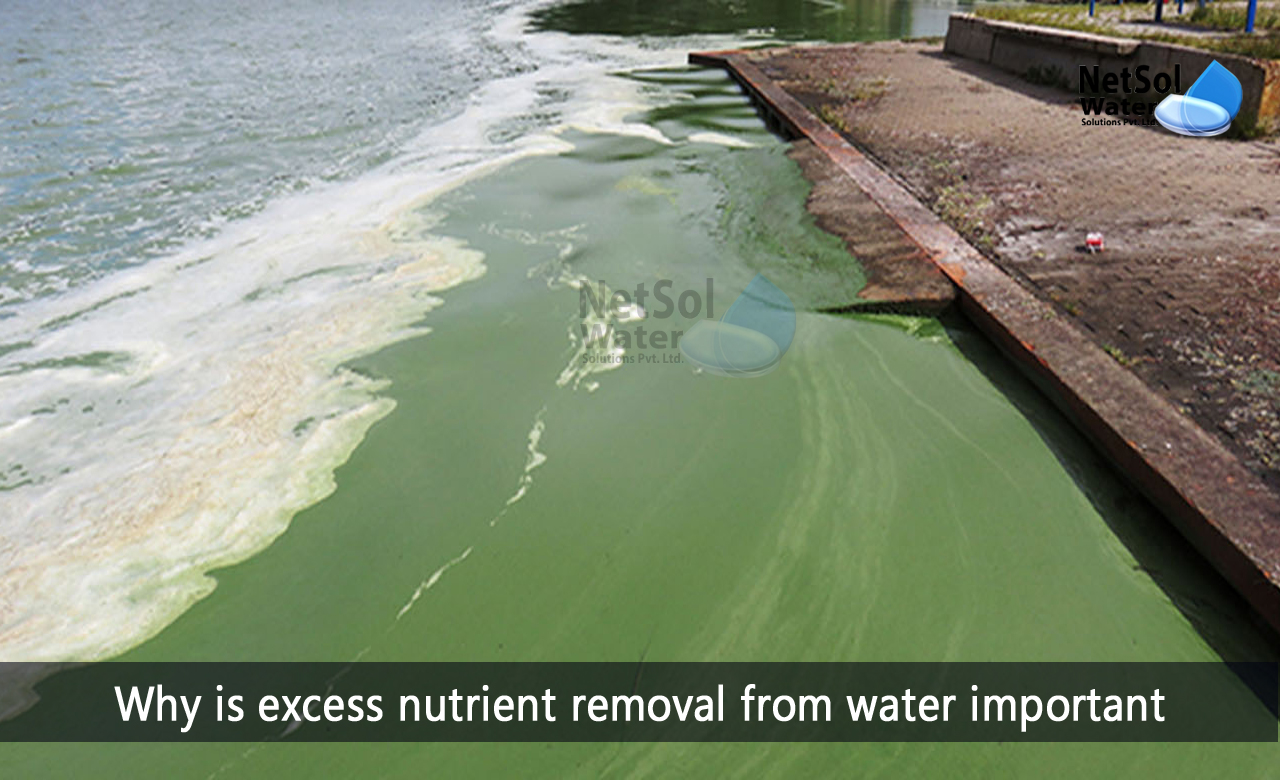Excess nutrients from agricultural runoff and wastewater are degrading water quality all over the world. Algal blooms are caused by nitrogen and phosphorus, which deplete oxygen in the water and make the water environment, unsuitable for aquatic life.
Why is excess nutrient removal from water important?
Sources of Nutrients in Wastewater Streams
1. Nutrients left over from industrial production (product / supplemental ingredients).
2. Phosphate-based cleaning chemicals or detergents.
3. Nutrients Found in All Other Organics.
4. Agricultural runoff.
Nitrogen Removal from wastewater
Nitrogen removal requires a large number of bacteria (or microbes) to mediate or carry out, a variety of chemical reactions. These microbes are found on wetland solid surfaces such as soil, litter, and submerged plant stems and leaves.
The three main transformation processes are ammonification (converting organic nitrogen to ammonia), nitrification (converting ammonia to nitrate or nitrite), and denitrification, which converts nitrate (NO3) to harmless nitrogen gas (N2), which makes up 85% of our atmosphere.
In wetlands that receive high nitrate loadings from agricultural runoff, or wastewater treatment plant discharge, denitrification is the dominant, long-term removal process. Denitrification is primarily carried out by heterotrophic bacteria, which require a carbon source for growth and energy. The process is temperature-dependent because it is aided by microbes. The rates are faster at higher temperatures because the bacteria are more active.
Phosphorus Removal from wastewater
Phosphorus, on the other hand, is primarily removed through physical and chemical means. Phosphorus typically enters wetlands attached to suspended material such as small soil particles (particulate form), or in the form of PO4 (dissolved form).
The leaves and stems of emergent and submerged vegetation aid in particle separation, by slowing the flow of water and allowing the particles to fall. Phosphate, the dissolved form of phosphorus, accumulates rapidly in sediments through sorption (to aluminium and iron oxides and hydroxides), and precipitation (to form aluminium, iron, and calcium phosphates).
Importance of Nutrient Removal
Nutrient removal standards are becoming increasingly stringent. As a result, municipal and industrial organizations are implementing technologies, to meet nitrogen and phosphorus discharge requirements.
When untreated wastewater is returned to the environment, the introduction of excess nutrients can cause catastrophic damage. Nitrogen and phosphorus are especially dangerous because they promote algal bloom, a severe overgrowth of algae that can deoxygenate aquatic environments, block vital sunlight, and kill off large numbers of fish. Furthermore, there is a risk of negatively impacting aquatic life.
Experts widely believe that excessive nutrients in the environment can pose health risks to humans as well.
Treatment for the nutrient removal
There are numerous technologies available to remove nutrients, such as nitrogen and phosphorus from wastewater streams.
Particle settling (sedimentation), volatilization (releasing as a gas into the atmosphere), and sorption, are the three main physical processes of nutrient removal.
· Sorption is the process by which a nutrient adheres to a solid (adsorption) or diffuses into another liquid or solid (absorption).
· Chemical processes include nutrient form transformations and chemical precipitation, which is the formation of a solid compound from a liquid via a chemical reaction.
· The primary biological processes are uptake (or assimilation) by plants, algae, and bacteria, as well as microbe transformation.
All of these processes take place in various compartments, which include water, biota (plants, algae, and bacteria), litter, and soil.
Manufacturers of wastewater treatment plants in India
Netsol Water is committed to the protection of natural streams and reservoirs. By tailoring our technology to your unique treatment needs, we can help ensure compliance with environmental guidelines, for wastewater nutrients.
We customize the water, wastewater and sewage treatment plants to meet the specific needs of our customers, at an affordable price. We also provide fully automated and semi-automated systems for ease of use.



